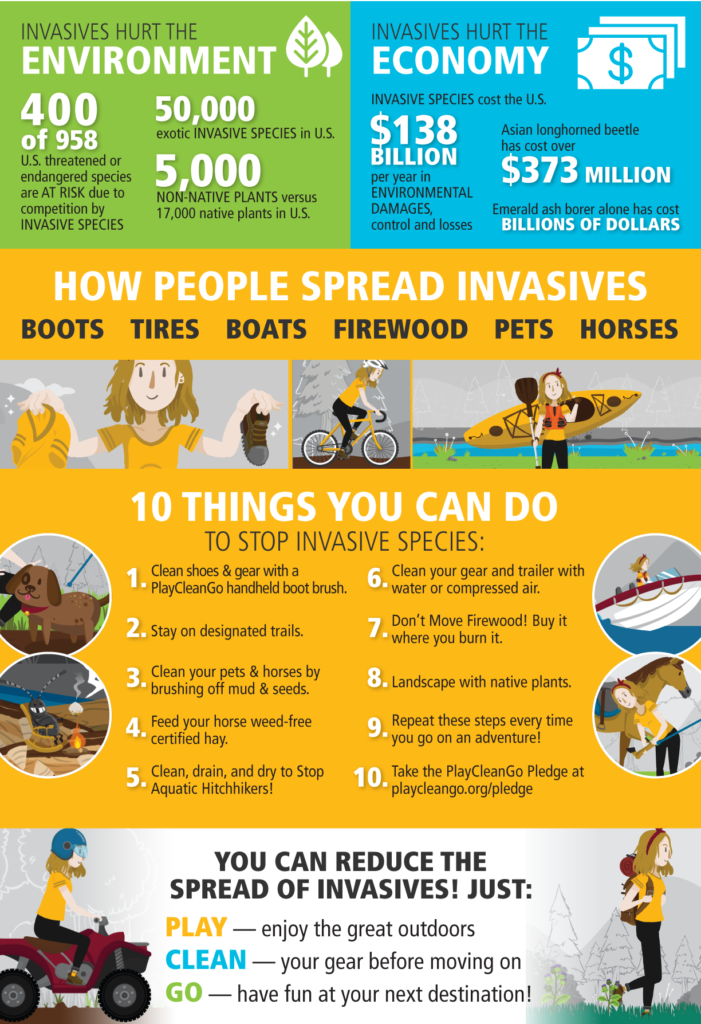Only YOU… can help stop invasive species
Humans play a vital role in stopping the spread of invasive plant and animal species.
Mississippi is blessed with approximately 19.2 million acres of forestland throughout the state. Outdoor recreation is one of the most popular pastimes for many Mississippians.
But, did you know that our outdoor activity can contribute to the spread of invasive plants and pests?
Part of the Mississippi Forestry Commission’s (MFC) mission is to provide active leadership in the protection of the state’s forest inventory.
“I think a lot of Mississippians think of the Forestry Commission as the agency that puts out forest fires,” said Russell Bozeman, MFC state forester. “While that is one arm of our protection efforts, we also have foresters dedicated to the health of Mississippi’s forests. These foresters work with landowners to ensure their trees remain healthy and provide information and assistance to prevent the spread of invasive plants and pests.”
What are Invasive Species?
Invasive species are plants and animals that are not native to a particular area. Invasive species also change their habitat for the worse. Not all nonnative species are considered invasive. Wheat, for example, is nonnative but its introduction has not had an adverse effect on its habitat.
“Unfortunately, Mississippi is now home to a number of invasive plants and pests,” Bozeman said. “Plants like cogongrass and kudzu and pests like the southern pine beetle and the Ips engraver beetle can wreak havoc on a stand of timber.”
How are Invasive Species spread?
There are a variety of ways that invasive species spread. Short-distance spread is typically a natural occurrence. Wind, rain or animals can carry invasive plant seeds a relatively short distance. Short-distance spread rarely becomes a problem because native plants and animals evolve to coexist with the invasive species.
Long-distance spread is almost always human-assisted. Plant seeds or insects are carried a long distance on clothing, vehicles or firewood and introduced to a new area where the natural plants have not built any tolerance for the invasive species. Aggressive species, such as cogongrass, quickly expand their short distance range because there are no natural enemies in the new habitat.
Do humans play a role?
Whether it is for work or play, many Mississippians spend a great deal of time outdoors. Most people are unaware that certain plants or insects are not native and can be harmful to a new habitat.
Many weed seeds move well in soil, so muddy boots or vehicle tires can transport these seeds a great distance. Also, some weed seeds have hooks or barbs that attach to clothing.
Many invasive plants are attractive and can be found in nurseries as ornamentals. They can also hide in nursery stock, potting mixes, or home décor made from raw wood products.
Insects and disease pests of trees can be found in cut firewood and wood pallets.
“Humans play a significant role in the spread of invasive plants and pests,” said Bozeman. “The problem is that we don’t realize we’ve transported an invasive species until it’s too late. However, if we are aware of how these harmful species are spread, we can begin to take precautions to protect our trees and forests.”
What can we do?
There are a number of precautions individuals can take to help prevent the spread of invasive species.
- After hiking or walking through the woods, clean your shoes and clothing off before you get in your vehicle to return home.
- If possible, clean your vehicle and tires before you travel too far from where you went into the woods.
- Never haul firewood more than 10 miles away from where it was cut.
- Buy plants that are native to the area from a reputable nursery.
- Avoid self-seeding plants, as they can spread outside the flower bed.
“The MFC is actively fighting against the spread of invasive species in Mississippi, but we need help from individuals,” Bozeman said. “The best thing people can do to prevent the spread of invasives is to be aware that not everything in the forests are native to the area and to understand that humans are one of the primary ways these harmful species spread throughout our state.”
For additional tips on how to prevent the spread of invasive plants and animals, visit mfc.ms.gov/forest-health and like and follow @MSForestryComm on Facebook, Twitter and Instagram.

